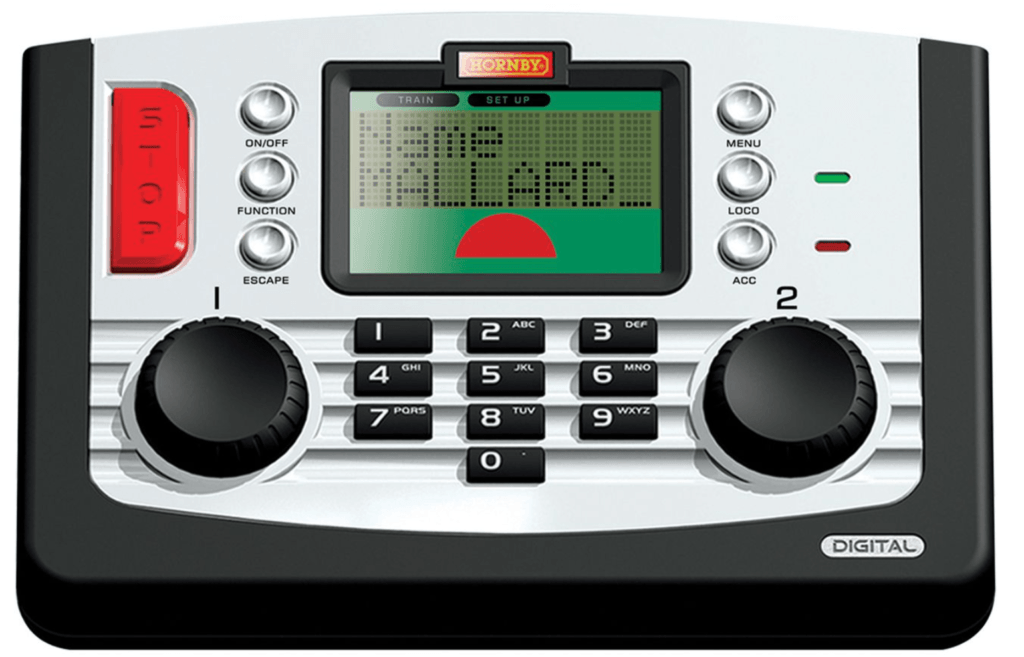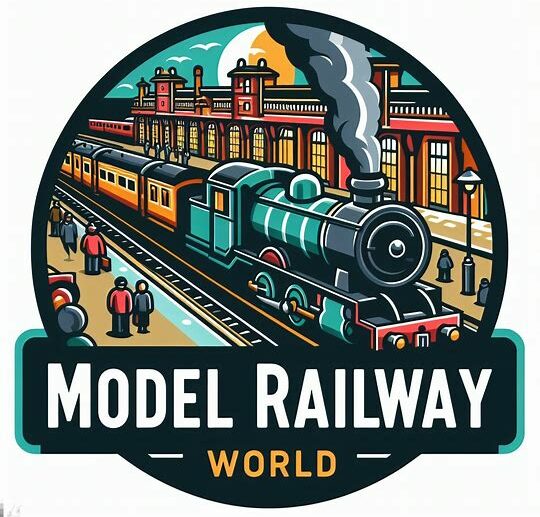If you’re delving into the world of model railways, you’ve likely heard of DCC, Hornby DCC or Digital Command Control. It’s a game-changer compared to older analogue systems, offering precision and flexibility in how you operate your miniature locomotives and manage the railway layout.
Now, what exactly has made DCC the favourite among hobbyists and what is DCC? Think about when television transitioned from analogue to digital, bringing a wealth of channels and better picture quality. Similarly, DCC has revolutionized model train control by providing a way to manage individual locomotives independently with more nuanced control directly from a central command station.

This isn’t just about controlling multiple trains; it’s also about the detailed commands you can send. Speed, direction, lighting, and even sound effects for each engine are all under your control without the need for complex wiring networks that were once standard. In essence, DCC systems send digital commands via the rails, enabling train enthusiasts to orchestrate their miniature world with incredible precision and ease.
As we ease into the next section, think about the potential of your model railway with DCC wiring. The efficiency and flexibility it adds mean more creative freedom and a more immersive experience. Up next, I’m going to help you sketch out your DCC adventure with a solid plan for your wiring layout that paves the way for smooth operation and scalability.
Planning Your DCC Wiring Layout
I’m going to walk you through planning your DCC wiring layout. Starting with a simple sketch of your model railway layout, mark where you’d like to place your command stations, power supplies, and track segments. This blueprint will be your guide and an invaluable tool as you progress.
Choose a DCC system that aligns with the scale and complexity of your model railway. If you’re running a modest layout with a handful of trains, a basic DCC system might suffice. But for larger setups with multiple locomotives, consider more advanced options that can handle the traffic.
Next, let’s talk about power districts. You’re going to find out about how dividing your layout into separate sections can prevent disruptions and ease troubleshooting. Each district is independently powered, so a short circuit in one won’t halt the whole system.
Some enthusiasts might experience hesitation when facing potential wiring issues. Don’t worry too much about these. With proper planning and a clear diagram in hand, you can identify and troubleshoot concerns before they become major problems.
The Essentials of DCC Wiring Installation
If you’re keen on getting your DCC model railway up and running, it’s crucial to understand the ins and outs of wiring installation. Below, I’m going to cover the things you’ll need to bring your digital realm to life.
First off, you need to choose the right wires for the job. That’s going to include knowing both the gauge and the type that will suit different parts of your layout. For most users, 14 to 18-gauge wire works well for the main bus lines. These lines are the power-carrying ‘highways’ that branch out across your layout.
Don’t forget, you can also implement dropper wires. These are thinner wires, usually around 22-gauge, that connect the track to the bus line ensuring every part of your track gets the juice it needs. Keeping a colour code for your wiring will save you loads of time in troubleshooting later on. Trust me on that one.
Soldering is your friend when it comes to ensuring reliable connections that won’t come loose over time. I’m here to help you with some tried and tested soldering tips. Clean your soldering iron tip frequently, use heat shrink tubing to insulate joints, and always, I mean ALWAYS, check for cold solder joints.
Incorporating boosters and command stations is like adding extra brains and muscle to your railway. These will give you the power and control necessary for extensive layouts or ones with many trains on the go. Simplify your life by distributing power evenly and keeping a single point of command.
You’re almost ready to hit the power switch! Just be sure you’ve checked all connections are secure and polarity is consistent throughout the layout. Inconsistencies will wreak havoc, and you don’t want that.
Remember, the goal here isn’t just to power up a train. It’s to create a tiny, thriving world that’s buzzing with life at the flick of a switch. With these foundations in place, you’re all set to explore the more advanced realms of model railway magic.
Advanced Considerations and Troubleshooting
So you’ve got your DCC model railway up and running, and it’s looking great. But as with any complex system, there might come a time when you’ll face some hiccups. That’s where you’ll need to put on your troubleshooting hat. I’m going to share some practical techniques to get you back on track.
Switching gears to enhancements, integrating advanced features such as sound and lighting may seem daunting, but it’s definitely rewarding for the overall experience. Choose something that resonates with you; whether it’s the sound of a steam engine chugging or the glow of street lamps at dusk, these features bring your layout to life.
In my experience, when it comes to DCC systems, prevention is better than cure. Regular maintenance checks can save you a lot of headaches down the road. Also, don’t shy away from upgrading parts of your system as needed. This can improve performance and keep things running smoothly.
And, of course, safety is paramount. Working with electricity requires caution. Always disconnect power when working directly on the tracks or wiring and follow manufacturer guidelines carefully. Remember, your first attempt at setting up and maintaining a system doesn’t need to be your last—you can always adjust your approach as you learn more.

Tim, this is a very practical and surprisingly interesting article. I have to confess that I’m not a model train hobbyist though I enjoyed this with my brother when I was a child. I suppose I had never imagined that model trains would benefit from the digital realm, but I can see that it’s a natural progression nowadays!
I’m intrigued by the sound effects made possible on this DCC system. I used to love travelling on steam trains in UK when I was a child! So, do model trains nowadays have steam coming out of their funnels and the distinctive ‘clakaty-clack’ sound as the engine picks up speed?
Wonderful! Very educational.
Blessings and success!
Linden